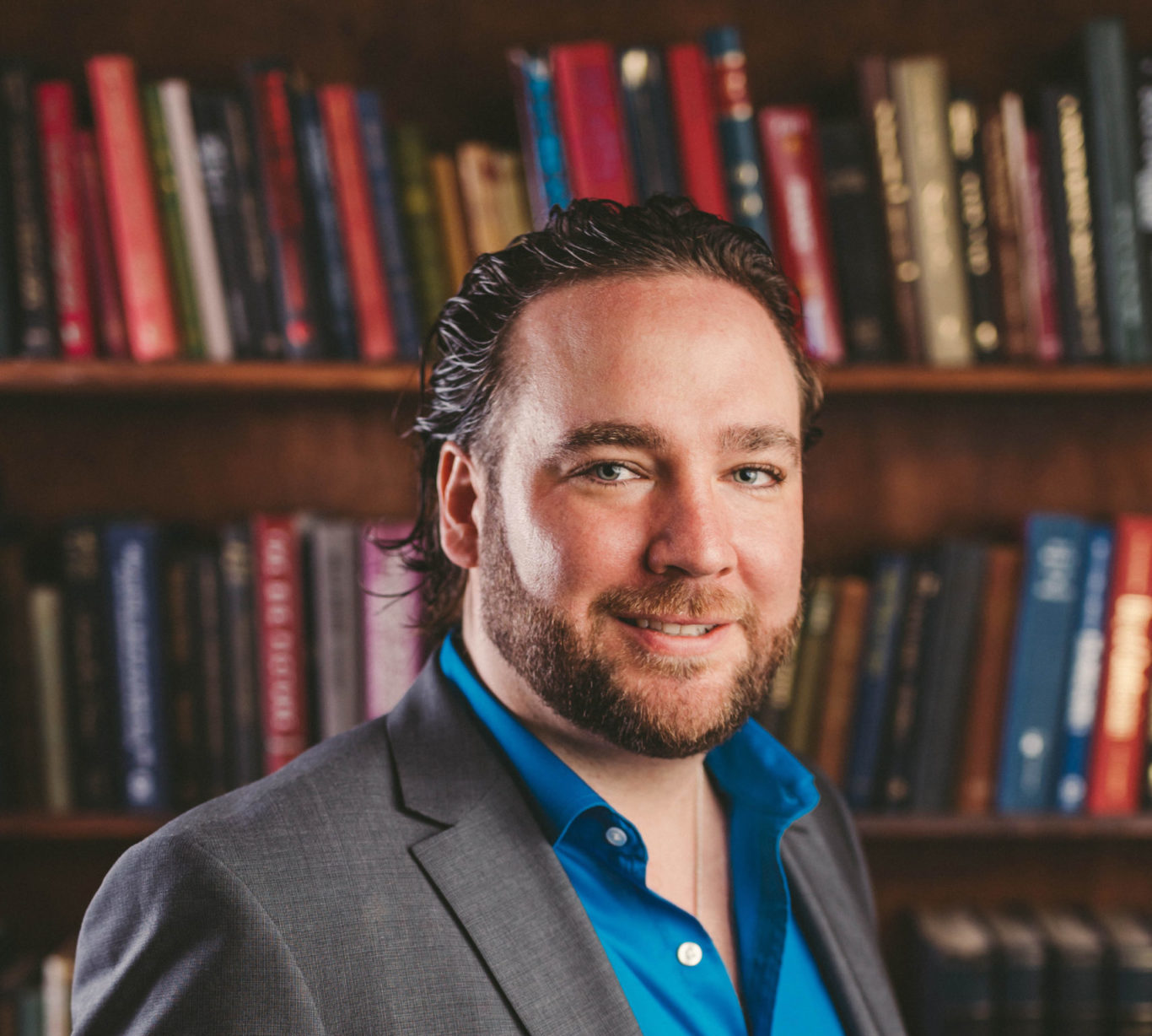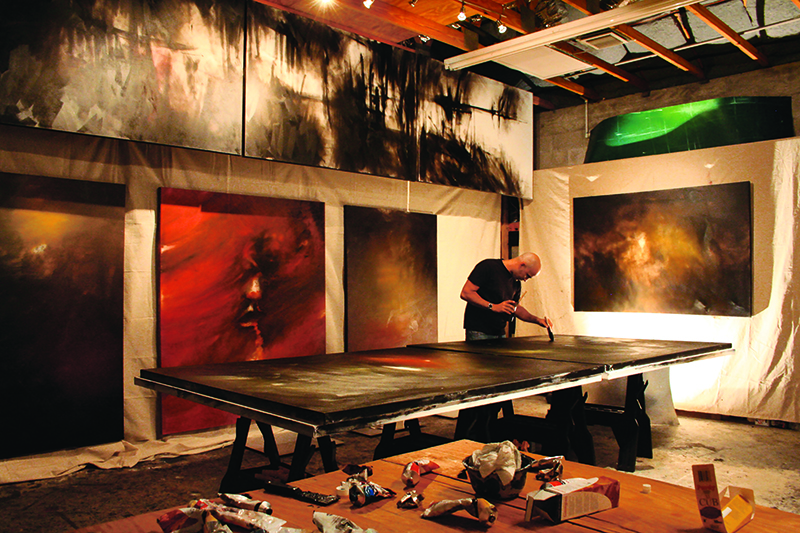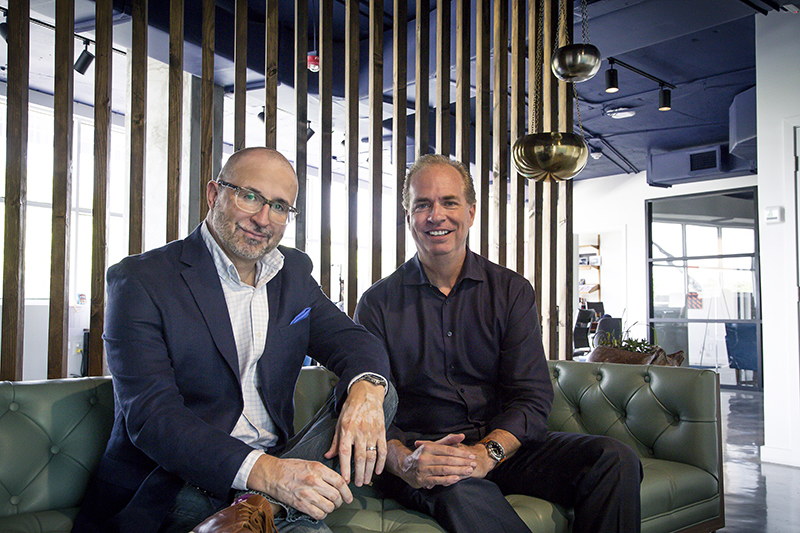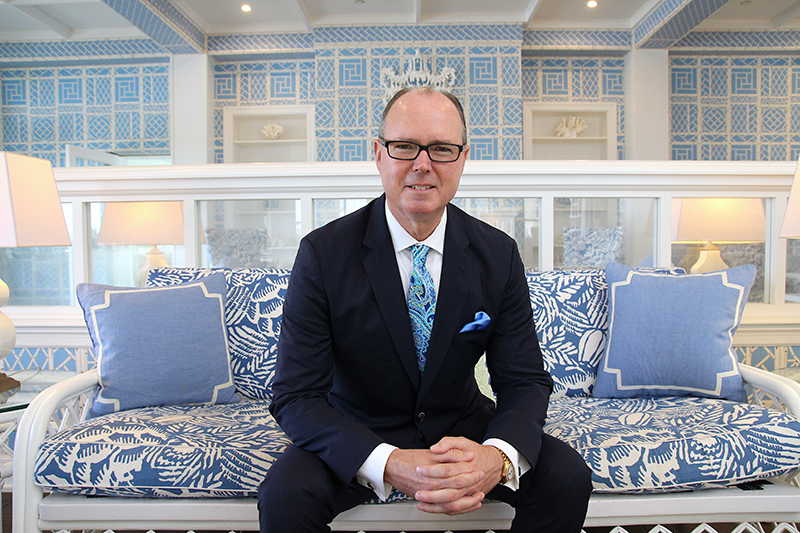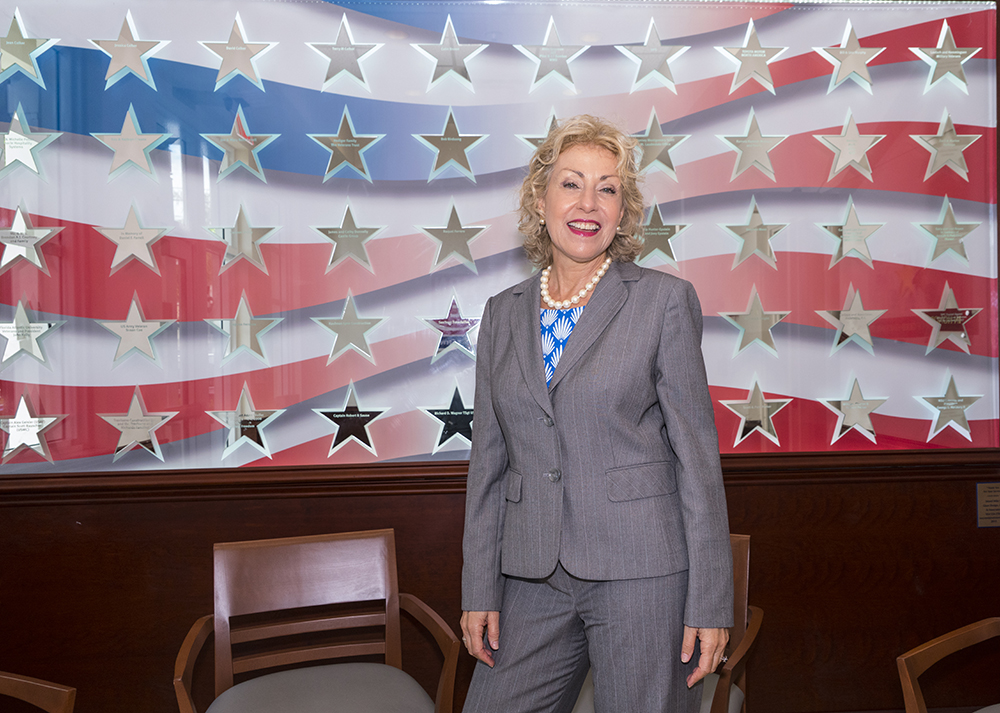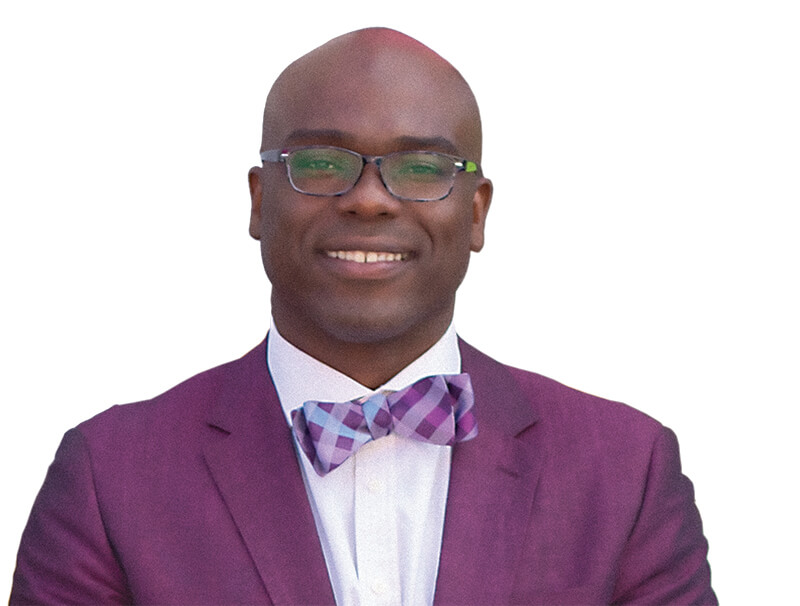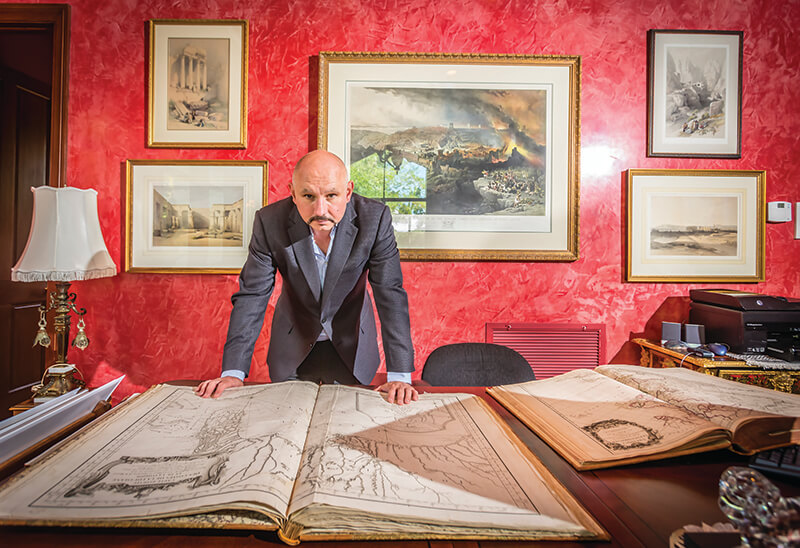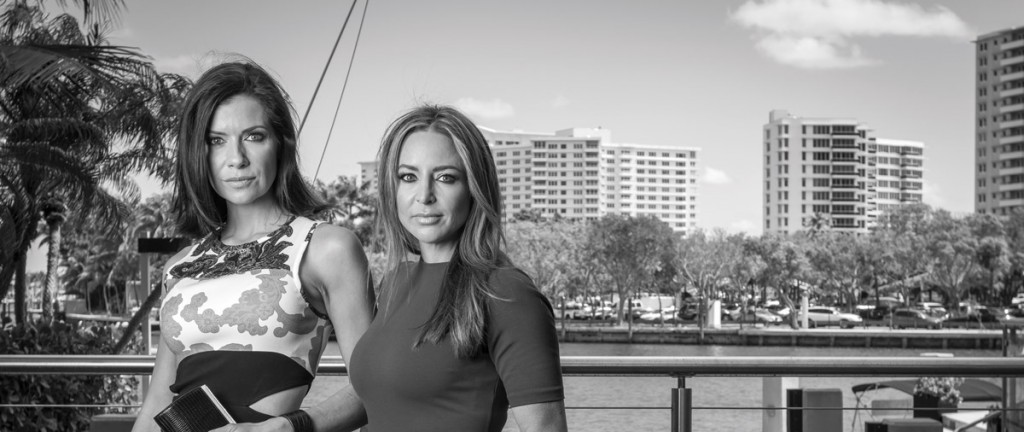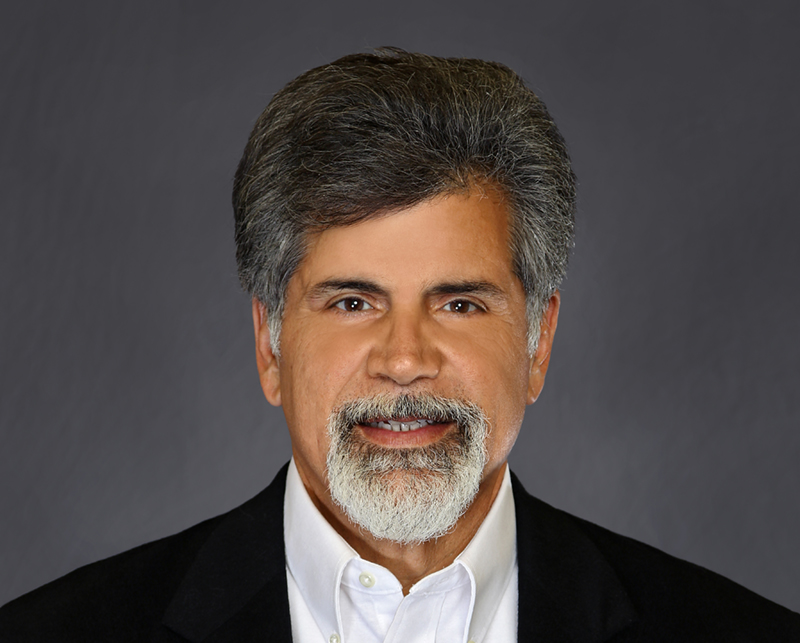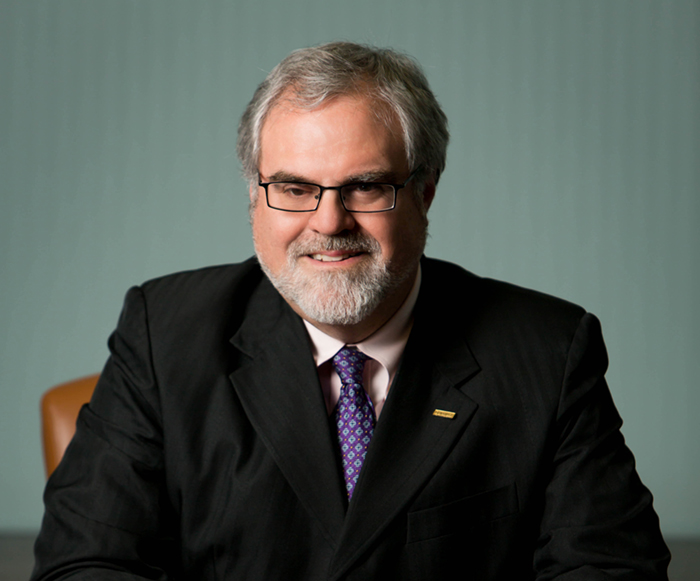Eddy Arriola learned about business from his father, who went on to be Miami’s city manager. In an interview with SFBW, he tells about his first major company, Inktel, and how he found a new career as chairman of rapidly growing Apollo Bank.
SFBW: You come from a very entrepreneurial and well-known Miami family. Tell our readers how you got started in business and worked with other members of your family?
Arriola: I always wanted to be an entrepreneur – start a business or lead a business – there was no other option. My grandfather on my mother’s side came over in the 1940s and started an auto supply store on the Miami River. My grandfather on my father’s side came over in 1960 from Cuba and worked odd jobs and eventually started a small printing company. My father, Joe, later joined him and bought him out and built and grew a printing company [Avanti Press]. My only role models have been entrepreneurs.
I went to Boston College and always thought I would start a business. I worked for my father for two years in the printing business and in the mid-1990s started an Internet web development company. I was telling people they needed to be on the
World Wide Web and people would say, “Is that the same as AOL?”
I saw it wasn’t just about developing websites, but also about delivery, customer services and distribution.
I ended up creating a company called Inktel, which was a call center and warehouse fulfillment. I started that with my father. He sold his printing business in 2001 and left Inktel and I became partner with two of my brothers, Rick and Dan.
My brother Dan runs a different business [iD Commerce + Logistics] in Chicago and Rick runs Inktel.
I had an opportunity to get on the board of TotalBank – Adrienne Arsht [who was chairwoman] was a family friend and gave me a chance to become involved. I loved community banking. When they sold the bank, I thought this was something I wanted to continue to do.
Some of the community banks had been sold and then the financial crisis came and that created disruption.
What lessons did you learn while you were on the board of TotalBank from 2001 to 2007?
Community banking is truly about people: Hiring really good people and making them feel part of a greater mission and treating them very, very well and really understanding your customers and building relationships.
Community bank isn’t a sexy business, but it’s truly a business where all people matter.
Did you see dark clouds on the horizon for the banking industry before your time at TotalBank was up?
It was pretty clear we were in a cycle, but we did not know how bad it would get. There was an opportunity to sell at an incredible premium and the window was closing pretty quickly.
When did you first see the opportunity to pursue Union Credit Bank, which turned into Apollo?
My first energy was devoted to starting a de novo [new] bank. As the financial crisis got worse, I realized that opening a new bank would be incredibly difficult.
In the spring of 2009, we dedicated our energy to acquiring a bank. We looked at every bank south of Orlando under $500 million in assets.
Union Bank hit most of our targets: It was a size we could get our arms around at just over $100 million in assets. It was a bank we could afford. It needed a new strategy, new management and new capital. We thought we could address that.
How did Richard Dailey get involved to become your president and CEO?
I went around the country and talked to 40 people who had started a bank. I put together a plan and criteria. I realized I needed a good banker who aligned with my philosophy to be my bank president. I talked to people in Miami. I kept hearing the name Richard Dailey.
We hit it off. It was never about money. It was about how do you build a great bank? How do you do it for the long haul? What’s the type of work environment you like to work in?
Aside from marrying my wife, it was the single best thing I’ve done.
What were the challenges along the way?
When we were bidding on the bank, they accepted the bid of someone else. On a whim three months later I called the previous owner and said, “How has your deal been going and why hasn’t it closed?” I did some looking around and found the company they signed the deal with didn’t have the capital to close.
I reached out to the owners of Union Credit Bank and said, “Your deal is about to fall apart. Before we acquire a different bank can we do something quick?”
We put a deal together over the weekend. Sept. 30, 2009 is the date we signed the letter of intent. We closed and acquired the bank on March 15, 2010.
It took us a long time to raise capital. We had a very specific time frame to deploy it. We were just weeks away from having to call it quits.
You achieved 20 percent year-over-year lending growth over three years from 2010 to 2013 – how did that compare to your projections and what peer institutions in the area are doing?
We were right on. We said the first three years we would focus on organic growth and turning things around and then in year four would look at acquisition opportunities.
We were outpacing on lending growth and overall growth. We were in the top 20 percent of all the key metrics: Overall asset growth, loan growth and net interest margin.
When did First Bank of Miami come up on your radar as a possible acquisition target?
We got a phone call in summer of 2013 from their attorney. [Shutts & Bowen Chairman] Bowman Brown knows us pretty well. We had expressed to him that we were in the process for raising capital for an additional acquisition. He said we may have a target. I can’t tell you who it is but I think you are the right fit.
The owner of their bank wanted an easy transaction. He wanted to work with a party that had his same values and wasn’t going to have to worry about a difficult negotiation and the bank was under a consent order for bank secrecy act issues.
We started due diligence in the fall and our final contract was signed in December 2013.
We had 90 days to raise capital – and we did from friends and family and local investors. Rich and I didn’t sleep. There were a lot of phone calls to make it happen. I tell my board of directors, “You know that you were crazy to allow us to raise $22 million in 90 days.” They said we knew we would be able to do it.
What was the attraction in getting First Bank of Miami?
We needed to get bigger and take advantage of the financial investment we had made in the business and management team. They had more branches and a more diversified clientele than we had so it was a good complement.
We felt we could address the issues they had – better management and controls over costs and regulatory issues.
Lastly, we felt we could negotiate a very good deal and we believe we did. It worked out because multiples and the price to acquire a bank have escalated since we struck our deal a year go.
How difficult is it to do the type of business lending you would like to do given the regulatory demands on banks these days?
It’s not the regulatory side, because we understand the rules. We feel that generally speaking that the rules and regulations in place are good business practices. We are a conservative bank and have a strong credit culture. The regulatory environment isn’t holding us back.
What is holding us back from really, really growing is competition. There are a lot of banks going after A-level customers and offering terms we aren’t willing to match.
We want to make a decision based on it being good 10 years from now. There are other banks that just don’t have that philosophy. They are either worried about the next quarter or selling the bank in the next year.
How did 2014 go and what do you expect in 2015 – what are your goals?
2014 was for us a really good year because first and foremost we were able to integrate First Bank of Miami without any real hiccups. We were able to raise capital and strengthen our management team.
Organic growth was pretty significant. Outside of the acquisition we added $70 million in net loan growth. For us, 2015 is really about realizing the economies of scale we have planned on and showing everyone around us that we can grow organically and provide great service. There’s a global slowdown and a lot of unknowns in the market, but we think it’s going to be an exciting year in South Florida.
You were appointed chairman of the Inter-American Foundation, which provides assistance to underserved communities in Latin America and the Caribbean. Did you have a connection with President Obama before he appointed you?
My brothers own the business in Chicago and had long-term relationships there so when a state senator named Barack Obama said he would run for U.S. Senate we met him and hit it off and helped him run. We said, “Hey one day we hear you might run for president and we want to help you.”
We got a call in 2007 and he said, “I’m really going to run. Can you guys help me out? One of the ways you can help is if you go to barackobama.com and make a donation.” My brother went to the website and pulled out his credit card and made a maximum donation. He was the first in the nation to make a max donation.
After he was elected, my brother was appointed to the president’s art committee and I was nominated to the Inter-American Foundation.
I went through the vetting process and had to wait for a seat opening. It didn’t happen until 2012. Then last year we received a call from the White House saying they would like me to serve as chairman.
What have you been able to accomplish?
The Inter-American Foundation has been around for 45 years. It’s a small independent government agency. It does amazing work in the Caribbean and Latin America, but there is very little awareness by the media and even in Congress and the White House. It’s very under the radar.
One of my big themes as chairman is we want to do great work but increase awareness for our organization to make sure we’re are the table when things happen in Latin America and the Caribbean.
There was a lot of media attention when the president pushed the emphasis on child immigration and everything happening in Central America. The foundation was at the table as a key player. We were at the White House and State Department trying to do solutions.
With things happening in Cuba, we would like to be part of a bipartisan commission to address the needs of the people in Cuba. The foundation is about grass root solutions. It’s not about top down solutions, such as building bridges and hospitals. What we do is look for solutions coming from the country – from the marginalized people in those countries. What resources do you need to have impact in your communities? We help to promote entrepreneurial solutions and cultural solutions to the problems.
What are the pros and cons about potentially doing business in Cuba?
The most important thing is being patient and holding your horses. This announcement is exciting to the people in Cuba. But, if you view it with the lens of business opportunity, there is a lot more to be seen. I’m optimistic, but you can’t do business in a country that doesn’t have a history of contract enforcement and ownership.
Even if it would open up tomorrow, a lot of Cubans who came over to the U.S. – Cuban-Americas in Miami – believe they have a lot of claim to assets in Cuba from land ownership and businesses and factories. You don’t know who to sign a contract with so there will be claim issues.
At the end of the day it’s still a socialist country, so the only partner to work with is the Castro regime. They control the workforce, the laws, rule all the resources and they don’t have a good track record on partnerships. There is still a lot more to see and a lot more time.
You played a key role in City Year coming to Miami. Tell readers why you pursued City Year, which provides AmeriCorps volunteers for schools, and what the challenges were along the way.
I got a call from my friend Brad Meltzer. He is the reason City Year is in Miami. Before he became a novelist, he was working in D.C. and was part of the staff in putting together AmeriCorps. When he hit financial success, he called up City Year and said we need it in Miami.
I called Miami-Dade Mayor Carlos Alvarez, Miami City Commissioner Marc Sarnoff and then county commissioner Carlos Gim�nez, saying you don’t know about City Year but you would be glad you did. Commissioner Gim�nez called me back and thanked me for the introduction.
I like things with impact and a chance for success. ?




